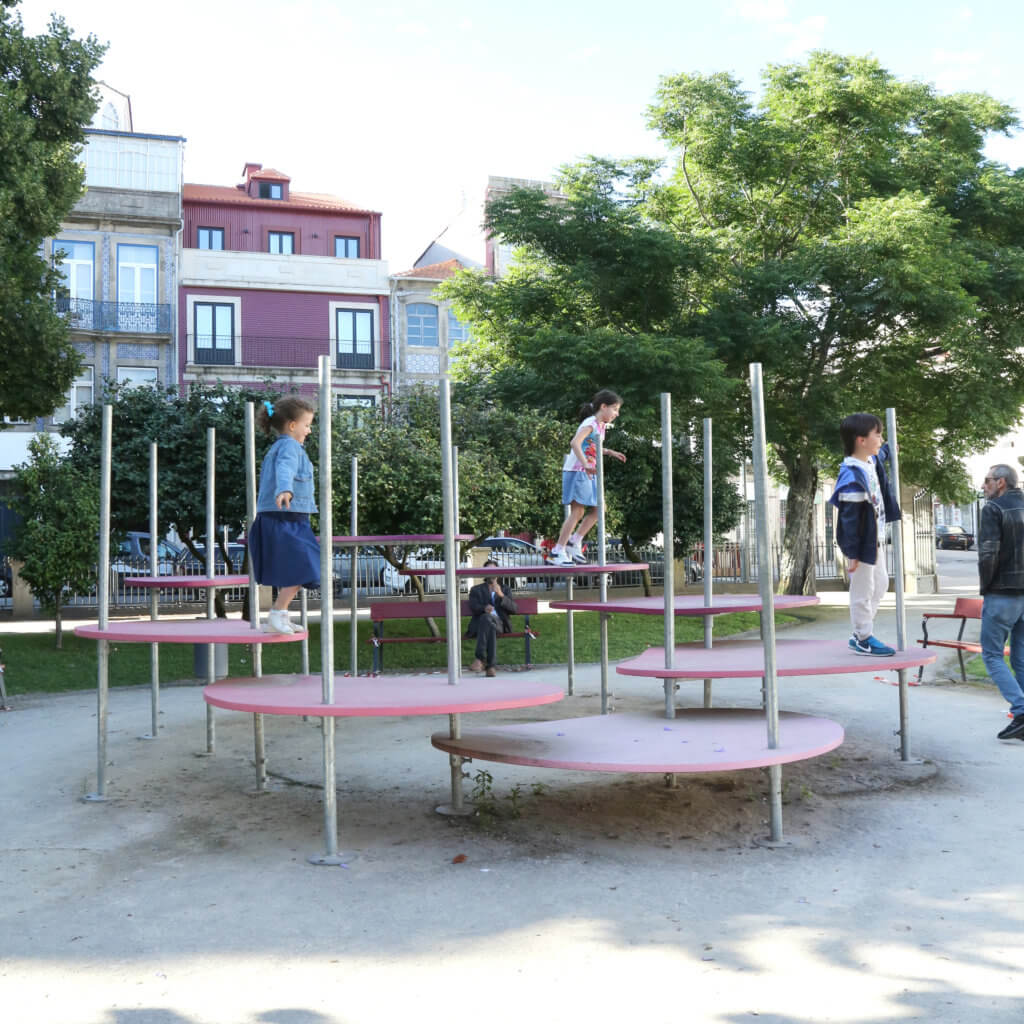Creating designs that are both open to spontaneity and structured enough to stimulate and inspire curiosity is a challenging task.
Children engage in the built environment and creatively re-invent places through appropriation and transgression.
According to Bruno Munari in his book “Da cosa nasce cosa”, games and toys must stimulate imagination, they cannot be completed or finished, otherwise, users will not be able to be involved, to participate. For the ideal toy to be understood by the child, it must be clear to him or her immediately without any explanation: what it is and how it works.
Open-ended is an object or equipment used by the child which doesn’t have a predetermined use or follow rules or conventions. Leaving all the decision-making up to children allows them to make choices, create a personalised play, and attach meaning to the designs. As a result of open-ended designs, children can create their own rules, goals, and meanings. Their cognitive skills are stretched and their independence is supported by self-regulation and self-discovery.
As opposed to closed-ended games and activities too designed, and too closed, which result in mimetic or repetitive responses, open-ended designs have no “correct” response or “proper” approach. During open-ended play, children decide for themselves and use all of their imagination and express their creativity fully. Open-ended designs can be toys, props, or for instance playscapes – large-scale playgrounds, environments that encompass and foster a culture of endless exploration, discovery, ambiguity, and amazement that inspire and empower children, through endless possibilities of exploration and improvisation, to be self-sufficient.

Creating designs that are both open to spontaneity and structured enough to stimulate and inspire curiosity is a challenging task. It is about experimentation, observation of end-users in action, and a lot of iterations along the design process. It is also, and mainly, about taking risks in conscious design decisions. The outcome is not foreseen, and assumptions are counterproductive. Open-ended design is a compromise between the extent of what is designed, which functions are integrated, what is structured, and what is left open.
Children’s appropriation of everyday objects and urban equipment in multiple possible and surprising ways can be real-testing scenarios for designers, urbanists, and architects by providing valuable insights into the levels of engagement and types of interaction. Children engage in the built environment and creatively re-invent places through appropriation and transgression. This involvement is an opportunity for spatial designers to understand children as end-users and stakeholders and integrate the findings into the design process.
Open-ended design is inspired by free play and therefore a way that allows children to make the most out of play initiated by themselves with the freedom to decide what to do and how to do it, for how long and when to try something new. It is not about satisfying the expectations of adults but feeding the imagination of the child’s mind. The open-ended play offers children a wealth of advantages for learning and intellectual development, it’s the ideal way to spark their imagination, engage in critical thinking and problem-solving and improve their social and emotional intelligence and skill-set.
